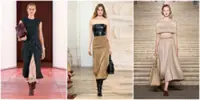Whether we want them to or not, our clothes may be giving our therapists more psychoanalytic material. Photo: The New York Times
Travis Paul Martin is someone who sticks to a uniform: a cashmere sweater and jeans in the winter, or gym shorts and a tee in warmer weather.
Martin, a publicist based in Chicago, wears those same outfits each week when he sets off for his therapy appointments.
“It helps me get on that couch to do what I need to do,” said Martin, 40, who usually pairs his outfits with Birkenstock clogs.
“I’m thinking back to stereotypes like Lorraine Bracco in The Sopranos, who always dressed up – if I was going to see her, I would never wear gym clothes,” he added.
He did not think much about how his looks might play a role in his care until one session, when his therapist pointed out that he was not wearing his favourite Birkenstocks.
Therapy may not seem like an occasion that requires putting much thought into an outfit.
But as many people have returned to in-person sessions – some after years of remote therapy – they’re finding that it can be tricky to get dressed for appointments.
Even if patients do not mean to say anything with their clothes, it may be unavoidable that their unconscious selves are speaking for them.
Therapists say they’re paying close attention.
Therapy and clothing have an inseparable connection “for both the therapist and the patient”, said Wei Motulsky, a clinical psychologist based in Portland, Oreron, who specialises in the care of people of colour in the LGBTQ+ communities.
“It goes beyond what they are wearing – it’s even their accouterments.”
Read more: With vintage fashion becoming trendy, stigma of wearing fur goes away
Perhaps in line with Sigmund Freud’s theory of the repressed, are our anxieties, obsessions and hidden inner selves returning in the form of what we wear to see our mental health counselors?
“I had a client who was a very senior lawyer, and she would show up for therapy and work in very traditional Kenyan outfits that, to me, suggested pride in her background,” said Avi Sanders, a clinical psychologist practicing in New York City and New Jersey.
Another client wore a lock-style necklace to their sessions together.
When Sanders asked about the jewellery, he learned it represented the client’s participation in the BDSM community – something the client had not talked about before.
Clothing is something he thinks about “every session, unconsciously in the background”, Sanders said, because of the subtle clues he can pick up about a patient’s identity and psychological state.
When Holly Falcone, an editorial nail artist based in Los Angeles, began seeing a new therapist for postpartum depression care, she realised she was worried about being “taken seriously”.
She also wanted to hide the dishevelment she felt in her daily life as a new mother.
She went out and purchased a capsule wardrobe of new professional clothing – a departure from the colourful, ruffled styles she usually wore.
“I wanted to impress her,” Falcone, 39, said.
In the cultural imagination, shows like The Sopranos and films like Girl, Interrupted and Good Will Hunting have played a role in shaping our ideas about what happens on the therapist’s couch – and what people wear to lie down on it.
In the second season of Sex And The City, Carrie Bradshaw meets with a therapist to work through a difficult breakup with Mr Big.
She turns up to appointments in cocktail-hour regalia: stiletto sandals; flouncy, floral print dresses; and designer handbags.
While visiting her therapist on the Upper East Side of Manhattan to address her own painful breakup, Grace Dougherty, an actress and writer, said she felt like “a lady in a movie doing therapy, this quintessential New York story”.
Dougherty, 28, noticed that what she wore for therapy seemed to track with her healing.
Right after she learned from a tabloid article that her former boyfriend, a fashion editor for a men’s magazine, was dating someone new, she “didn’t care to get dressed”, she said.
She was also doing remote therapy at the time.
Back in person, Dougherty began to wear clothing she considered more suggestive, like pieces from labels including Blumarine, because she had started dating again.
Eventually, she began to introduce vintage designs by Calvin Klein and Sonia Rykiel, because they made her feel more polished.
The uptown appointments, she said, gave her “permission to be elegant”.
If what patients wear is up for interpretation along with the rest of their emotional baggage, there’s plenty of room for misunderstanding, too.
And for some, a therapist’s interest in clothing can cross a boundary.
Read more: 'Unique, punchy and vibrant': Remembering Iris Apfel's maximalist fashion sense
Isa Toledo, a 34-year-old artist living in Lisbon, broke up with her therapist partly because of a seemingly offhand comment about something she was wearing.
One day, she arrived at therapy in a cherished vintage wool coat.
Her therapist complimented the garment and asked if she had purchased it at Desigual, a fast-fashion chain.
“I was very taken aback,” Toledo said. “I didn’t want the compliment and was stunned she thought it was Desigual, I’ve never been in their stores.”
Toledo is part of the cohort of people who dress up for sessions.
She assembles her therapy looks as if “I have a crush and I am going to run into them. I don’t have a crush on my therapist, but there is something analogous there.”
Those outfits, largely composed of what she considers nice pants and shoes, are worn with a singular intent: “To show that I’m in fact a grownup and not a perpetually wounded two-year-old, which is what it feels like when you are in therapy.” – ©2025 The New York Times Company





